
Overview
This article examines various persuasive advertising strategies employed by direct-to-consumer (DTC) brands, aimed at enhancing sales and customer engagement. It asserts that:
- Emotional appeal
- Personalization
- Humor
- Relatable storytelling
are pivotal in significantly boosting conversion rates and fostering brand loyalty. Successful campaigns from renowned companies such as Nike, Coca-Cola, and Dove serve as compelling evidence of these strategies' effectiveness.
Introduction
The landscape of direct-to-consumer (DTC) advertising is undergoing a significant transformation, with brands increasingly harnessing persuasive techniques to engage their audiences effectively. By analyzing compelling case studies—such as Nike's emotional storytelling and Coca-Cola's personalized campaigns—readers can uncover the potent strategies that drive consumer engagement and elevate sales.
Nevertheless, as brands endeavor to forge deeper connections with consumers, a pressing challenge emerges: how can they adeptly balance authenticity with persuasive messaging in an oversaturated market?
This article explores ten exemplary instances of persuasive advertising that not only showcase successful tactics but also provoke critical questions about the future trajectory of DTC marketing.
Parah Group: Transforming DTC Brand Sales Through Persuasive Advertising Strategies
Parah Group excels in Conversion Rate Optimization (CRO) for direct-to-consumer (DTC) companies. By employing persuasion examples advertisements, the firm significantly enhances profitability without increasing its advertising expenses. Harnessing data-driven insights and the principles of consumer psychology, Parah Group empowers companies to refine their marketing initiatives, leading to notable enhancements in conversion rates and average order values (AOV). This comprehensive approach ensures that every facet of a client's advertising strategy is meticulously aligned to maximize effectiveness and stimulate sales growth.
For instance, a $30M clothing line partnered with Parah Group to address low conversion rates. By:
- Redesigning their homepage to highlight social proof and reviews
- Reducing unnecessary pop-ups
- Optimizing product pricing
- Gamifying the progress bar for free shipping thresholds
- Implementing post-purchase upsells
they achieved a remarkable 35% increase in conversion rates and a 10% boost in revenue per visitor. Similarly, Grab Green, a $15M cleaning product line, experienced an 80% increase in AOV after implementing strategies such as free shipping thresholds and bundle offers.
The effect of persuasion examples advertisements and other persuasive strategies on DTC company profitability is profound. Brands that adopt a holistic marketing approach, integrating emotional storytelling with data analytics, can achieve significant ROI improvements. Parah Group employs AI-driven techniques to enhance personalization, ensuring that clients can replicate such successes.
As we look toward 2025, the emphasis on emotional appeal in advertising will continue to shape DTC marketing strategies. Brands that successfully engage with consumers on an emotional level are likely to experience greater loyalty and improved revenue, reinforcing their standing in a competitive market. Parah Group's expertise in optimizing these strategies positions them as a vital partner for DTC brands aiming to transform their sales trajectories.
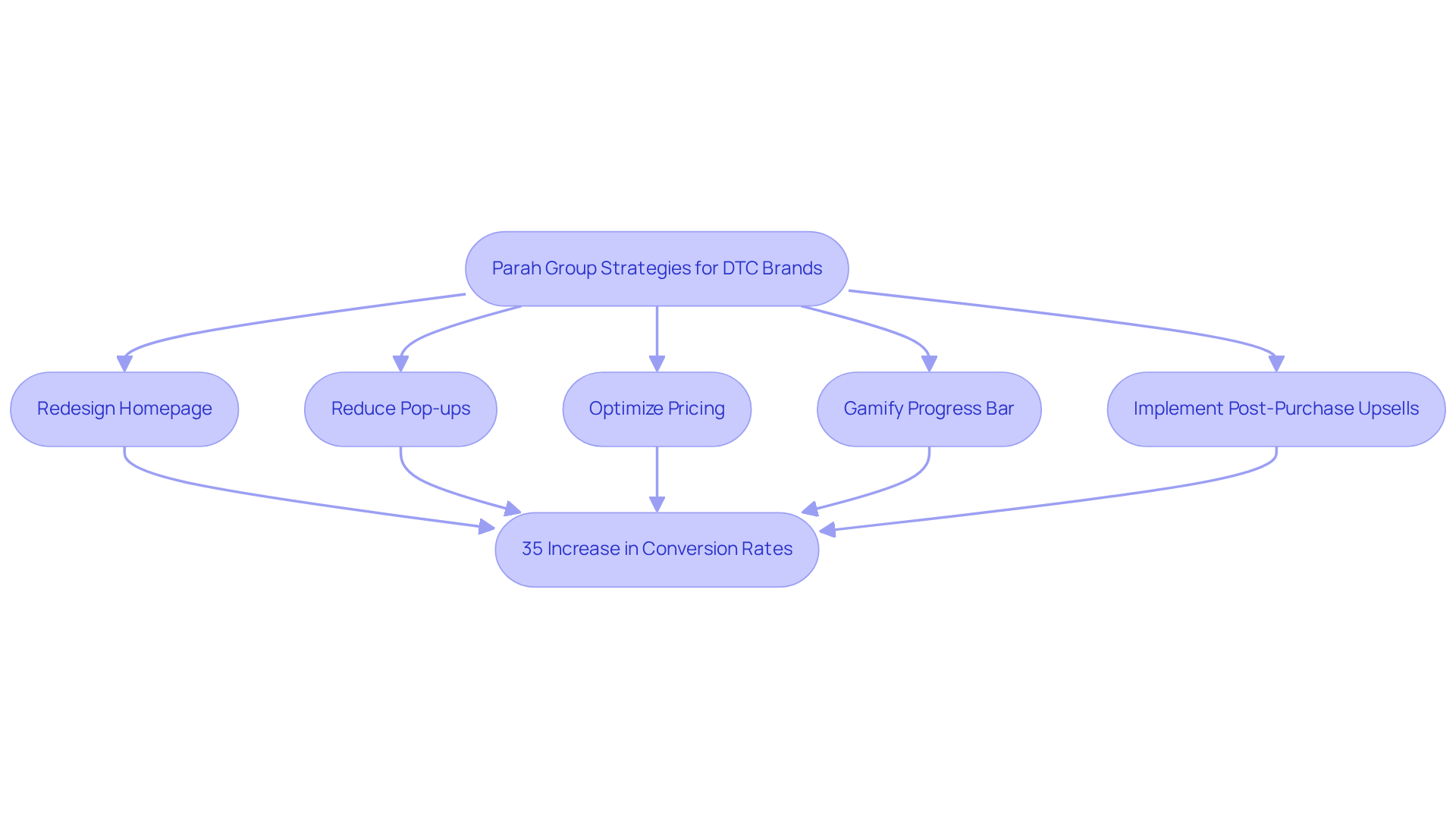
Nike: Leveraging Emotional Appeal in the 'Just Do It' Campaign
Nike's iconic 'Just Do It' campaign exemplifies the profound power of emotional appeal in advertising. By showcasing genuine athletes overcoming obstacles, Nike forges a personal connection with individuals, motivating them to transcend their limits. This emotional resonance not only cultivates brand loyalty but also drives revenue, as consumers feel an authentic connection to the message of empowerment and perseverance.
Research indicates that emotional advertising can yield a 23% increase in revenue for brands that effectively engage their audience; furthermore, emotional ads are 27% more likely to go viral, generating nearly three times more organic impressions than their logical counterparts. The campaign's success is underscored by its ability to inspire a collective sense of empowerment and perseverance, making consumers feel integral to a larger narrative.
As a result, Nike has solidified its position as a leader in the athletic market, with its market share soaring from 18% to 43% in North America over the decade following the campaign's launch, and annual sales escalating from $877 million to over $9 billion by 1998. This illustrates the significant impact that emotional storytelling can exert on both brand loyalty and financial performance.
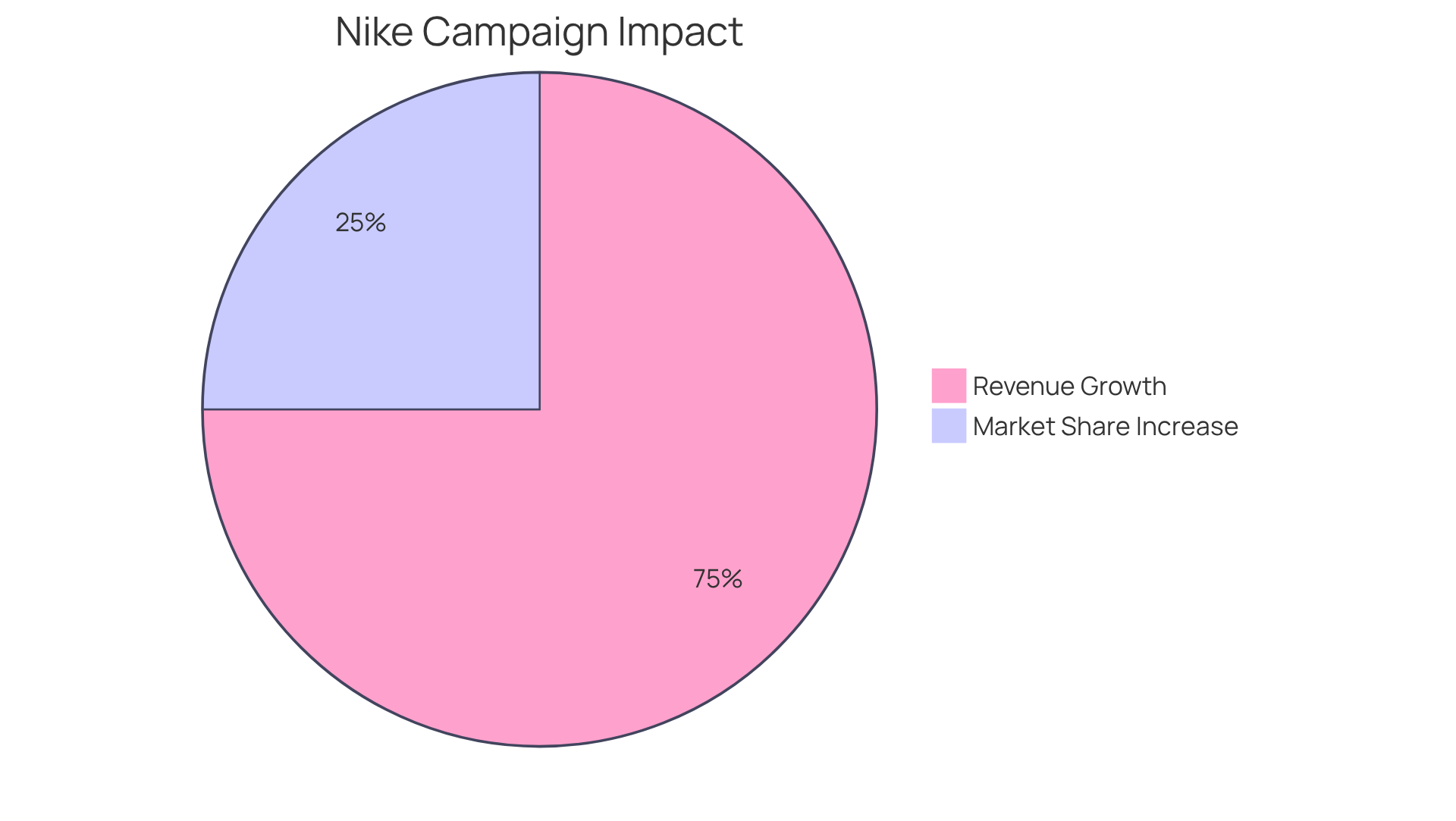
Coca-Cola: Driving Sales with Personalization in 'Share a Coke'
Coca-Cola's 'Share a Coke' campaign serves as one of the most effective persuasion examples advertisements that revolutionized the beverage industry by personalizing the consumer experience. By replacing its iconic logo with trendy names on bottles, Coca-Cola inspired individuals to seek out and share their personalized beverages. This strategy not only drove sales but also ignited a considerable social media phenomenon, as consumers shared images of their customized bottles, serving as persuasion examples advertisements that cultivated a sense of community and connection with the brand.
Additionally, the initiative introduced the 'Share a Coke Memory Maker,' allowing users to create personalized videos and memes, which further enhanced engagement. By tapping into nostalgia while appealing to Gen Z, Coca-Cola effectively attracted both younger and older demographics. The campaign's global rollout across more than 120 countries underscores its extensive reach and ambitions, with significant engagement metrics illustrating its influence on consumer behavior and brand loyalty.
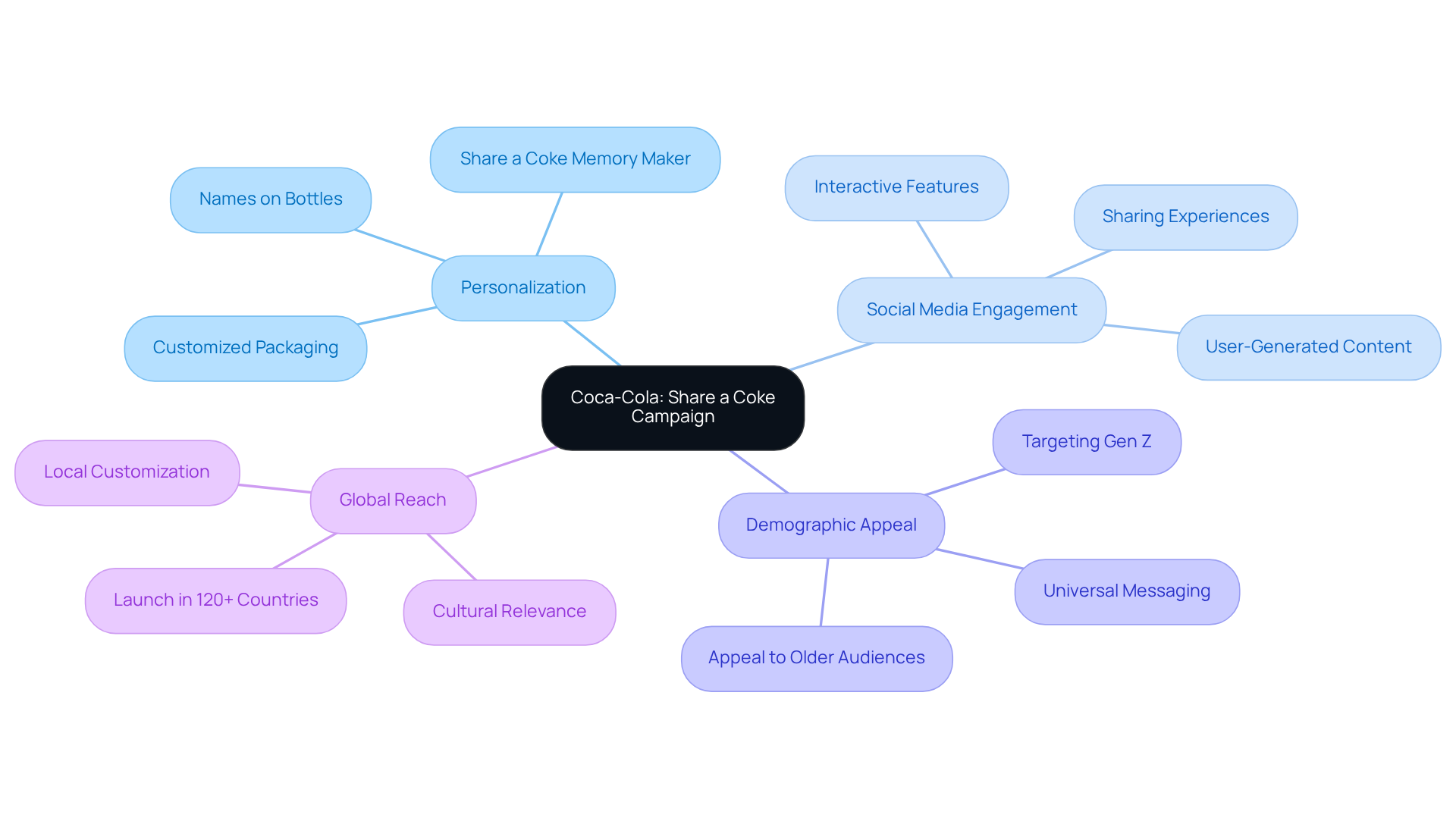
Dove: Building Brand Loyalty Through the 'Real Beauty' Campaign
Dove's 'Real Beauty' initiative has fundamentally transformed the beauty industry by challenging traditional beauty norms through the authentic portrayal of women of diverse shapes, sizes, and ages. This commitment to inclusivity has resonated deeply with consumers, fostering a robust sense of trust and loyalty towards the brand.
By championing messages of self-acceptance and confidence, Dove has not only set itself apart in a crowded market but has also forged strong emotional connections with its audience through compelling storytelling. The initiative's success is evident, as it significantly boosted Dove's consumer loyalty and business performance, with sales soaring from $2.5 billion to over $4 billion.
Furthermore, a global study revealed that only 2% of women consider themselves beautiful, highlighting the campaign's critical relevance in addressing pervasive body image issues.
While Dove's strategy exemplifies how authenticity in advertising can cultivate trust among consumers and encourage brand advocacy, it also highlights some persuasion examples advertisements that have faced criticism regarding their profits from beauty-related products, underscoring the complexities inherent in purpose-driven marketing in today's landscape.
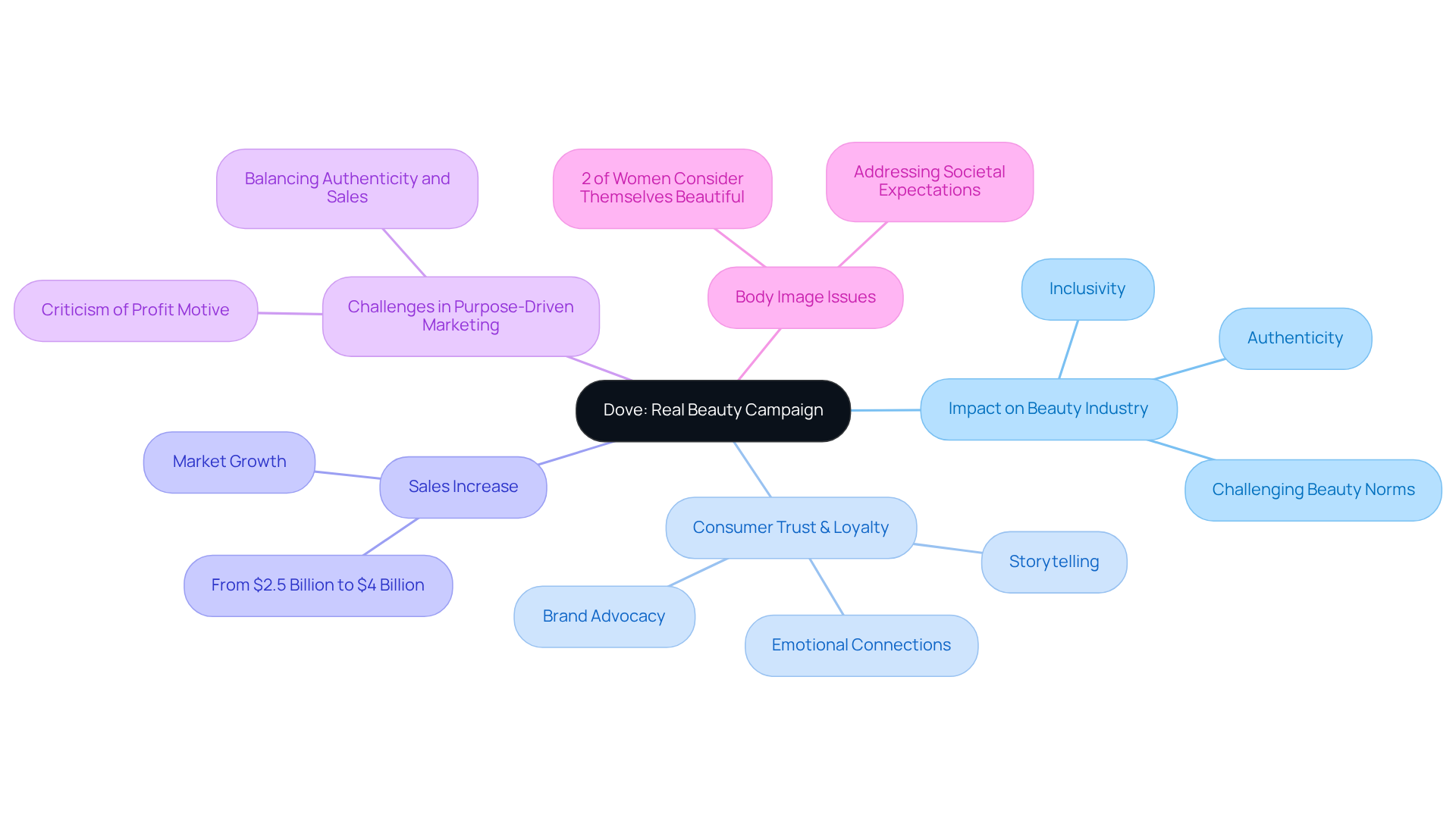
Apple: Persuading Consumers with Innovation and Quality Messaging
Apple's marketing strategy is firmly anchored in its unwavering commitment to innovation and quality. By consistently launching groundbreaking products and emphasizing their unique attributes, Apple crafts an engaging narrative that compels consumers to select its offerings over those of competitors. The company's promotional initiatives are characterized by elegant designs that prioritize user experience and highlight the emotional benefits of its products. This strategic focus not only fortifies Apple's position as a market leader but also cultivates robust customer loyalty.
For instance, the 'Shot on iPhone' initiative, which invites users to share their photography, has significantly enhanced community involvement and connection to the brand. This campaign showcases the iPhone's capabilities while fostering a sense of belonging among users. Apple's adeptness at articulating its value proposition has resulted in remarkable sales growth, with the company capturing a substantial share of the smartphone market. This underscores the profound impact of quality messaging in nurturing customer loyalty.
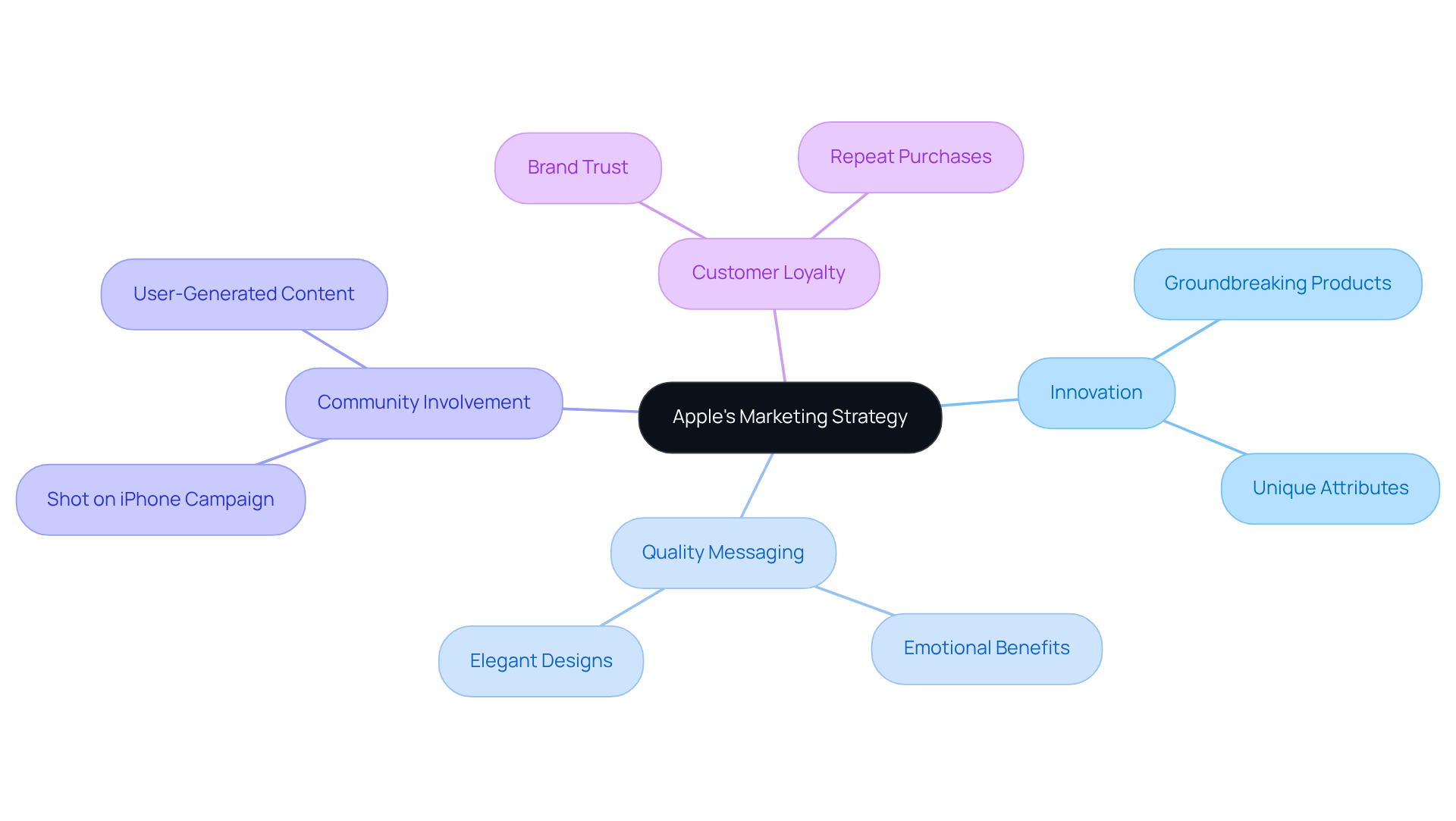
Old Spice: Capturing Attention with Humor in Advertising
Old Spice has effectively revitalized its brand image through humor, particularly exemplified by the iconic campaign 'The Man Your Man Could Smell Like.' By leveraging absurd and humorous scenarios, Old Spice not only captured consumer interest but also established a memorable identity. This engaging approach resonated with younger audiences, leading to a remarkable:
- 125% increase in body wash revenue
- 107% surge in total revenue
- 2700% rise in Twitter followers
The campaign generated over 1.4 billion impressions, and its shareable content combined with captivating messaging transformed Old Spice into a cultural phenomenon. This case illustrates that humor can be a powerful tool in persuasion examples advertisements, significantly enhancing engagement and driving sales. As marketing expert Sakshi Jonwal insightfully stated, "The campaign’s backbone was simple: humor, absurdity, and shareable moments," which contributed to its standout success in the competitive advertising landscape.
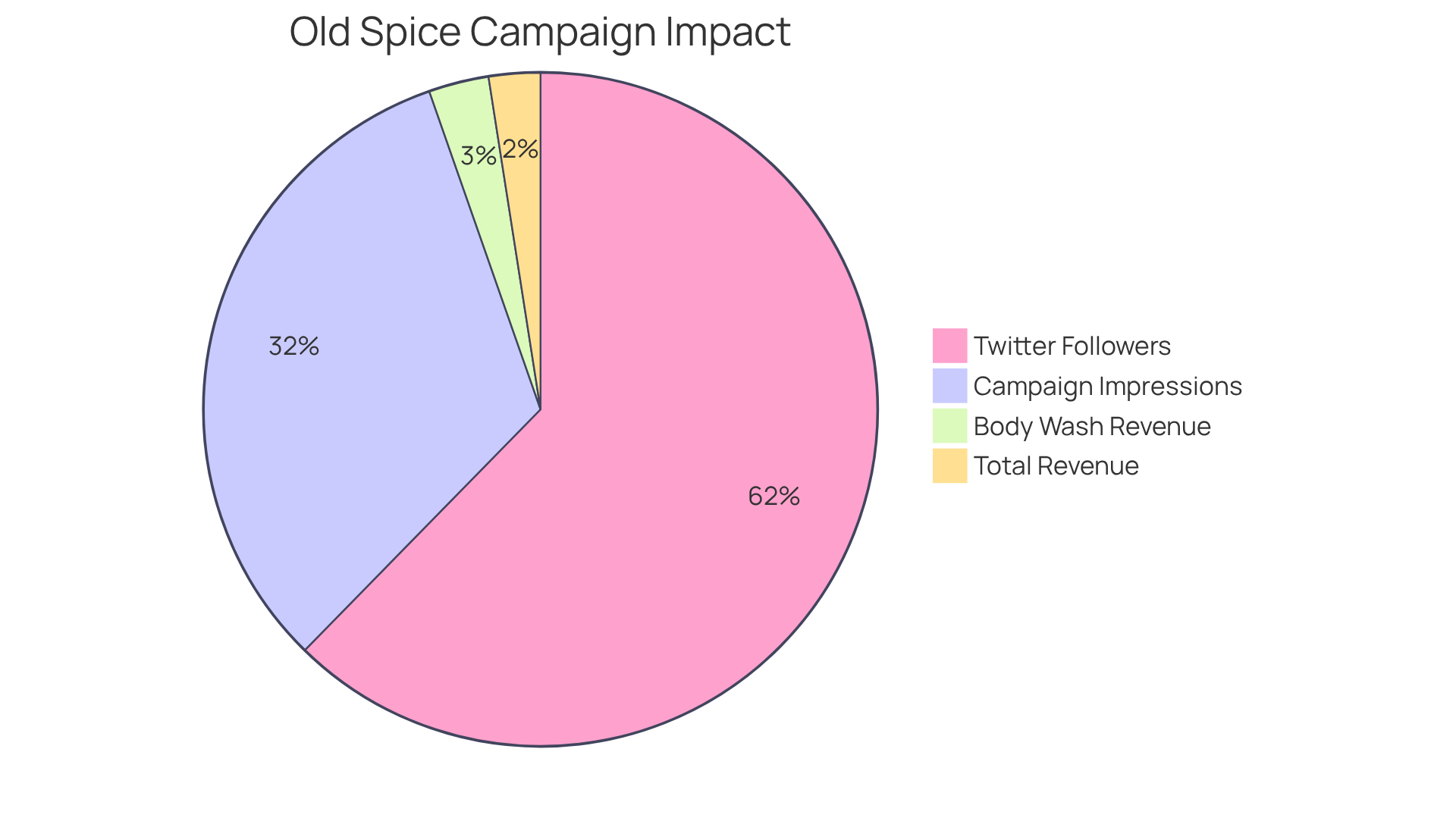
Pepsi: Utilizing Celebrity Endorsements for Persuasive Impact
Pepsi has adeptly harnessed the power of celebrity endorsements to elevate its brand image and expand its audience reach. Collaborations with iconic figures such as Beyoncé and Michael Jackson not only generate excitement but also foster aspiration around its products. These partnerships are great persuasion examples in advertisements that effectively capture consumer attention and enhance the company's credibility, encouraging a preference for Pepsi over its competitors. The emotional connections fans form with these celebrities significantly bolster brand loyalty, leading to increased revenue.
For example, Pepsi's visibility during major events like the Super Bowl has been correlated with substantial sales spikes, with reports indicating a remarkable 15% increase in sales during these high-profile campaigns. Furthermore, research suggests that celebrity endorsements are among the most effective persuasion examples in advertisements, potentially yielding a 20% rise in purchasing intentions and underscoring their impact on consumer behavior.
By aligning with personalities who resonate with their target audiences, particularly young consumers aged 15 to 35, Pepsi successfully reinforces its image as youthful and vibrant. Additionally, the long-term efficacy of these endorsements is crucial; they not only drive immediate sales but also nurture lasting customer loyalty. This strategic approach aligns with Pepsi's overarching commitment to sustainability and social responsibility, as they aim to collaborate with celebrities who embody these values, ultimately fostering sustained growth in a competitive market.
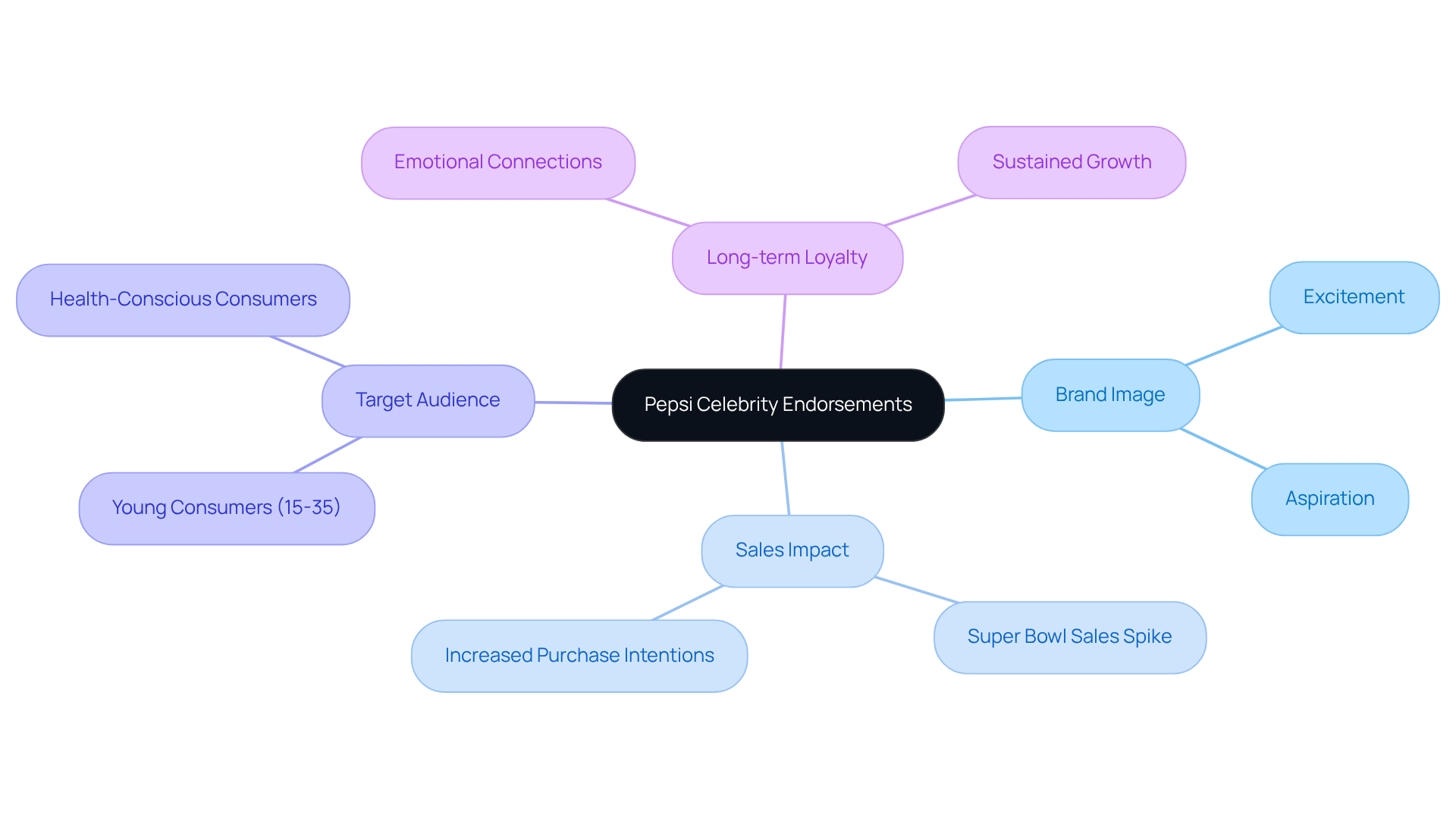
Heinz: Engaging Consumers with Humor in 'Weiner Stampede'
Heinz's 'Weiner Stampede' Super Bowl ad exemplifies a masterclass in engaging advertising, featuring a delightful stampede of dachshunds dressed as hot dogs that captivates audiences with humor and charm. This playful approach not only entertains but also reinforces Heinz's brand identity as fun and approachable.
The ad's effectiveness during one of the year's most-watched events underscores the significant role humor plays in creating memorable moments that resonate with viewers. Marketing specialists assert that humor dramatically enhances product recall; amusing advertisements are 6.1 times more effective in boosting engagement, with 90% of consumers recalling humorous ads.
Tim Calkins, a marketing professor, states, 'safe advertising isn’t the advertising you notice or remember,' emphasizing how humor can distinguish brands in a saturated marketplace.
The success of the 'Weiner Stampede' illustrates that it stands out as one of the key persuasion examples in advertisements, showing how lighthearted strategies can effectively foster customer connections and drive sales, particularly in a landscape where humorous ads have seen a decline of 37% over the past two decades.
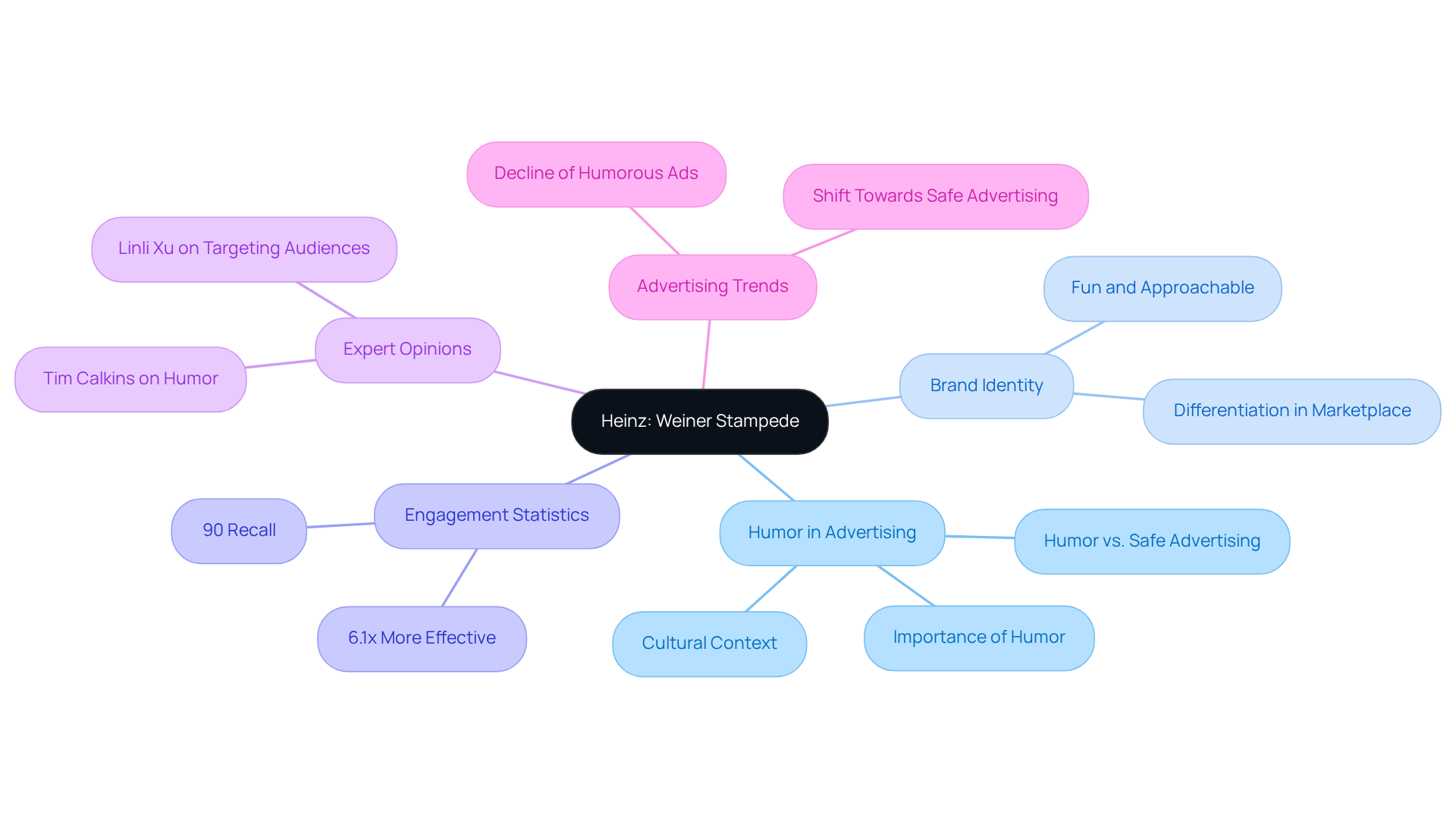
Airbnb: Persuading Travelers with Authentic Experience Messaging
Airbnb's marketing strategy is fundamentally rooted in the promotion of authentic experiences, compelling travelers to immerse themselves in local cultures and communities. By showcasing real hosts alongside their distinctive offerings, Airbnb crafts narratives that resonate with consumers who seek genuine travel adventures. This unwavering focus on authenticity not only distinguishes Airbnb from conventional hotel chains but also cultivates trust and loyalty among users. Consequently, this approach significantly boosts bookings and fosters brand advocacy.
Data indicates that two-thirds of Gen Z utilize platforms such as TikTok and Instagram for travel inspiration, underscoring the critical importance of authentic storytelling in attracting modern travelers. Additionally, Airbnb's user-generated content campaigns invite guests to share their experiences, thereby enhancing credibility and encouraging word-of-mouth marketing. This strategy has proven effective, as evidenced by the company's ability to facilitate over 300 million guest check-ins in the past decade, highlighting the profound influence of authenticity in driving customer engagement and bookings.
However, Airbnb faces challenges, including rivalry from established hotel brands and the necessity of managing its reputation amid guest complaints. Moreover, strategic partnerships with local organizations and tourism boards are vital in enhancing guest experiences and navigating regulatory challenges. The 'Live There' campaign is one of the key persuasion examples advertisements that illustrate how authenticity in messaging can effectively drive bookings, reinforcing the connection between genuine experiences and consumer behavior.
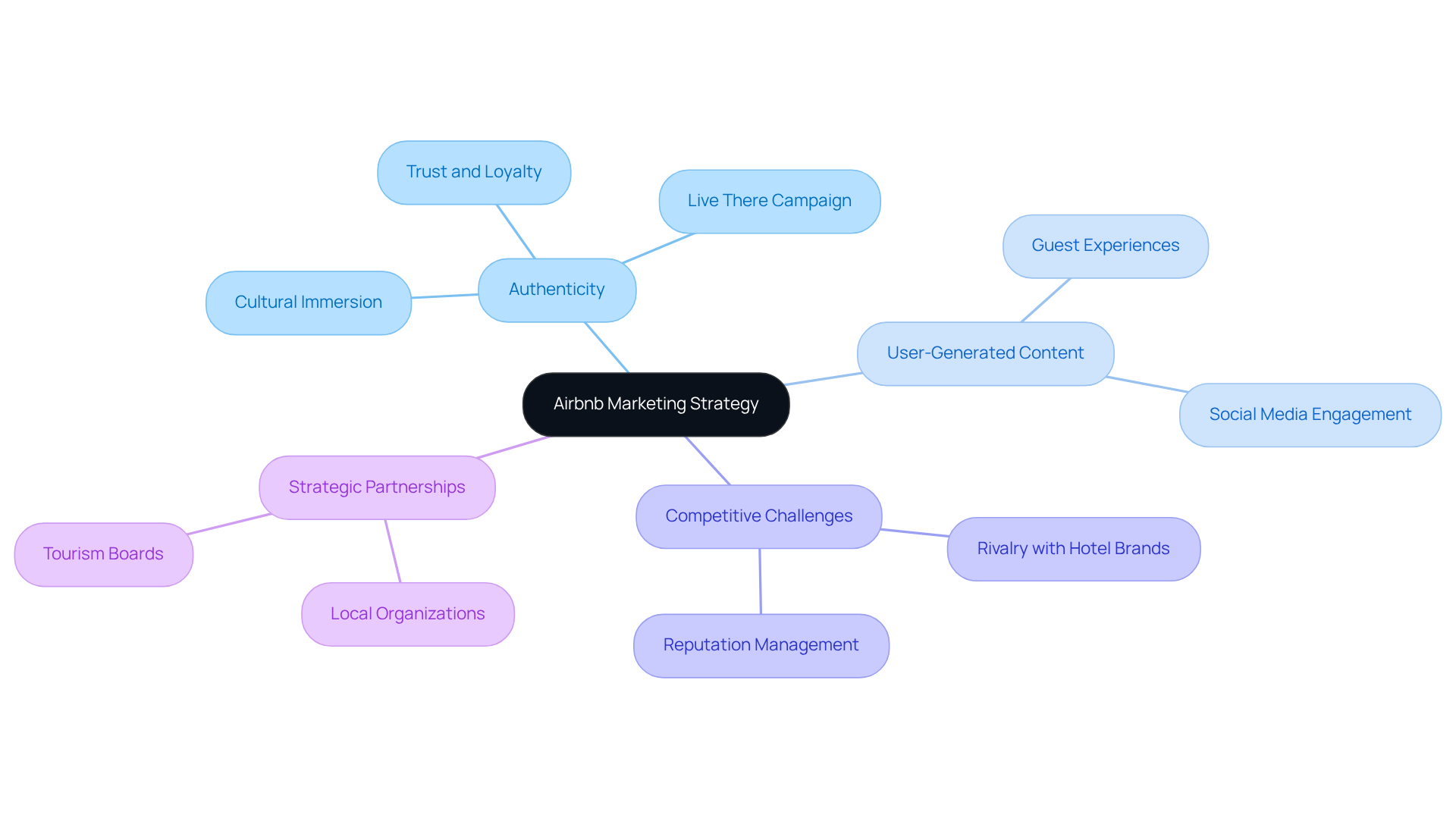
Match.com: Connecting with Consumers Through Relatable Storytelling
Successful DTC companies have strategically employed conversion rate optimization (CRO) techniques to enhance advertising effectiveness. A notable example is a $30M apparel company that partnered with Parah Group to redesign its homepage, emphasizing social proof and customer reviews. This initiative resulted in an impressive 35% increase in conversion rates.
Similarly, Grab Green, a $15M cleaning product company, implemented free shipping thresholds and bundle offers, achieving an 80% increase in average order value (AOV).
These case studies serve as persuasion examples advertisements, illustrating how combining relatable narratives with data-driven strategies can significantly elevate consumer engagement and conversion rates. By focusing on effective storytelling and proven strategies, brands can not only enhance their identity but also encourage users to connect more meaningfully with their platforms, ultimately driving higher conversion rates.
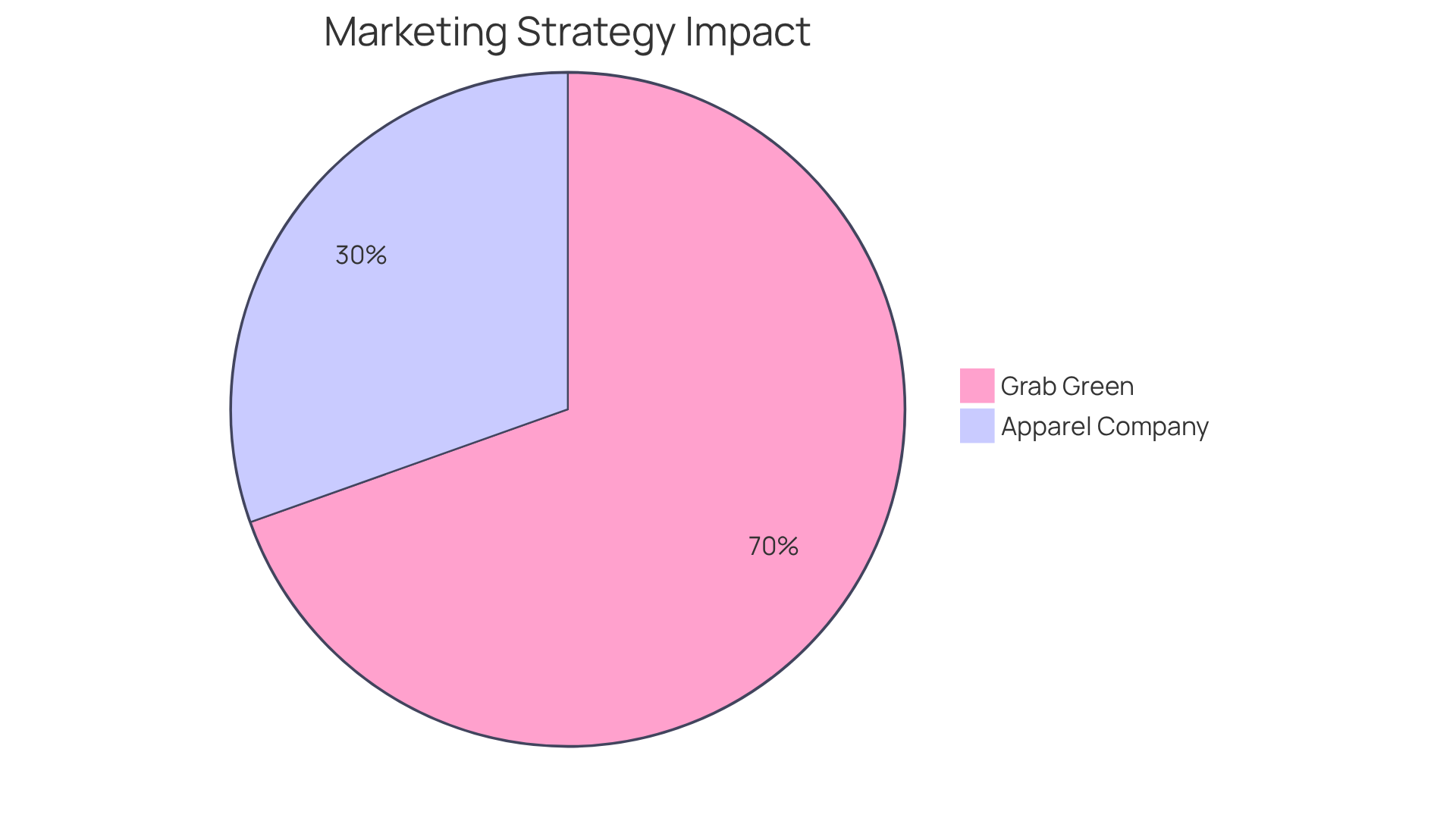
Conclusion
The exploration of persuasive advertising techniques utilized by direct-to-consumer (DTC) brands underscores the indispensable role that emotional engagement, personalization, and innovative strategies play in influencing consumer behavior. By harnessing these tactics, brands can craft compelling narratives that resonate profoundly with their audiences, ultimately fostering increased loyalty and sales.
Prominent examples from industry titans like Nike, Coca-Cola, and Apple illustrate how emotional storytelling, personalized experiences, and a steadfast commitment to quality can significantly enhance brand perception and profitability. From Nike's impactful 'Just Do It' campaign to Coca-Cola's groundbreaking 'Share a Coke' initiative, these brands have adeptly employed persuasion techniques to cultivate deep connections with consumers, resulting in exceptional business outcomes.
In an increasingly competitive landscape, the importance of these advertising strategies cannot be overstated. As brands look to the future, embracing authenticity, humor, and emotional resonance will be essential for capturing consumer attention and driving engagement. DTC brands are strongly encouraged to adopt these proven methods to elevate their marketing efforts and forge lasting relationships with their customers, thereby ensuring sustained growth and success in the dynamic marketplace.
Frequently Asked Questions
What is Parah Group’s main focus in advertising for DTC brands?
Parah Group specializes in Conversion Rate Optimization (CRO) for direct-to-consumer (DTC) companies, enhancing profitability through persuasive advertising strategies without increasing advertising expenses.
How does Parah Group improve marketing initiatives for its clients?
Parah Group uses data-driven insights and principles of consumer psychology to help companies refine their marketing initiatives, leading to improved conversion rates and average order values (AOV).
Can you provide an example of a successful partnership with Parah Group?
A $30M clothing line partnered with Parah Group to enhance their low conversion rates by redesigning their homepage, reducing pop-ups, optimizing pricing, gamifying free shipping thresholds, and implementing post-purchase upsells, resulting in a 35% increase in conversion rates and a 10% boost in revenue per visitor.
What results did Grab Green achieve by working with Parah Group?
Grab Green, a $15M cleaning product line, experienced an 80% increase in AOV after implementing strategies like free shipping thresholds and bundle offers.
How does emotional appeal play a role in advertising, according to the article?
Emotional appeal in advertising, as exemplified by Nike's 'Just Do It' campaign, can significantly enhance brand loyalty and drive revenue by connecting with consumers on a personal level.
What impact did Nike's 'Just Do It' campaign have on its market share and sales?
Following the launch of the 'Just Do It' campaign, Nike's market share in North America increased from 18% to 43%, and its annual sales surged from $877 million to over $9 billion by 1998.
How did Coca-Cola's 'Share a Coke' campaign innovate consumer engagement?
Coca-Cola's 'Share a Coke' campaign personalized the consumer experience by replacing its logo with names on bottles, driving sales and creating a social media phenomenon as consumers shared images of their personalized beverages.
What additional features did Coca-Cola introduce to enhance engagement in the 'Share a Coke' campaign?
Coca-Cola introduced the 'Share a Coke Memory Maker,' allowing users to create personalized videos and memes, which further engaged consumers and appealed to various demographics.
What demographic appeal did Coca-Cola achieve with its 'Share a Coke' campaign?
The campaign successfully attracted both younger and older demographics by tapping into nostalgia while also appealing to Gen Z.
How widespread was Coca-Cola's 'Share a Coke' campaign?
The 'Share a Coke' campaign was rolled out globally across more than 120 countries, demonstrating its extensive reach and impact on consumer behavior and brand loyalty.
FAQs











